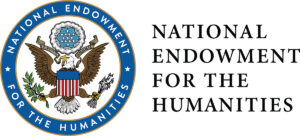Allison Norrie
Fairfield Public Schools
TEACHER'S SNAPSHOT
Subjects:
African Americans, Civic Engagement, Civil Rights, First Amendment, Free Speech, Racism, Rights & Responsibilities of Citizens
Course Topics/Big Ideas:
Cultural Diversity and an American National Identity, Democratic Principles and the Rule of Law, Rights and Responsibilities of Citizens, The Struggle for Freedom, Equality, and Social Justice
Town:
Wallingford
Grade:
High School
Lesson Plan Notes
On March 10, 2001, one of the preeminent leaders of the white nationalist movement in the United States, Matthew Hale, gave a speech at the Wallingford Public Library. Hale was the “Pontifex Maximus” of The World Church of the Creator, which was designated as a hate group by the Southern Poverty Law Center and the Anti-Defamation League. Hale had personally selected the town of Wallingford for his speech, as it had been the hotbed of controversy surrounding the celebration of Martin Luther King Day the year before. Until 2000, Wallingford was the only town in Connecticut that did not give town employees a paid day off for the holiday, and the Reverend Jesse Jackson came to Wallingford in April to lead a candlelit vigil down Main Street in protest. Hale and his group selected the Wallingford Public Library as their meeting space. On the day of the event, both local and state police, many in riot gear and accompanied by police dogs, were dispatched to the site. Some were stationed in the library’s meeting room. Supporters and protestors alike showed up at the library and violent confrontation ensued. Hale was so happy with the results of his visit that he immediately scheduled a return to Wallingford for April 21, 2001. The events surrounding Hale’s visit, including the controversy over the library providing space for the speech, highlight various issues related to First Amendment rights and civic responsibility that are valuable for students to consider and discuss.
ESSENTIAL QUESTION
SUPPORTING QUESTIONS
- What types of speech are protected by the First Amendment in the United States?
- What is the history of hate speech in Connecticut?
- What civic action can be taken in response to hate?
ACTIVITY
Part I:
As a class, students develop a “bill of rights” for their classroom to guide class discussions (in keeping with the ALA’s Bill of Rights). This can be done as a shared document using a platform such as Google. It can also be created as a giant poster that students can then hang in their classroom. This will set the stage for part II of the inquiry.
Part II:
Students “think, pair, and share.” Using the class-created “bill of rights” to maintain civil discussion, students will break out into small groups. Next they will analyze the photographs with their groups using the compelling question as their guide. Students will then jigsaw (rotate out members of their groups) and share their findings with other groups. Once this is accomplished, students will rejoin their original groups and answer the compelling question. Finally, the class will revisit their “bill of rights” and make any edits they find valuable after engaging in the “think, pair, share” activity.
Resources on effective use of the “Think-Pair-Share” strategy can be found at Facing History & Ourselves.
Below are some easy strategies for a quick and shortened version of a “think, pair, and share” inquiry:
1) Students, either in groups or individually, select the source that best encapsulates the events that transpired in Wallingford in 2001.
2) Students investigate definitions (linguistic and legal) of “hate speech” and lead discussions on their findings.
OPPORTUNITIES FOR ASSESSMENT
- Journaling: Students reflect on their definition of “free speech” and the Library Bill of Rights, as well as the role of fringe groups in using public spaces. Possible prompts:
– How do you define “free speech?”
– How do these events make you feel?
– What are some similar events you’ve experienced in your lifetime?
– What should the role of public schools be in allowing for free speech?
– What should the role of other public spaces be in allowing for free speech?
Additional information about journaling in the classroom can be found at Facing History & Ourselves. - Classroom Debate: Students will investigate their local library or school’s policy on the use of meeting rooms and free speech and then have a classroom debate centered on the compelling or discussion question of their choosing. You may wish to use this “Classroom Debate” rubric.
RESOURCE TOOL KIT
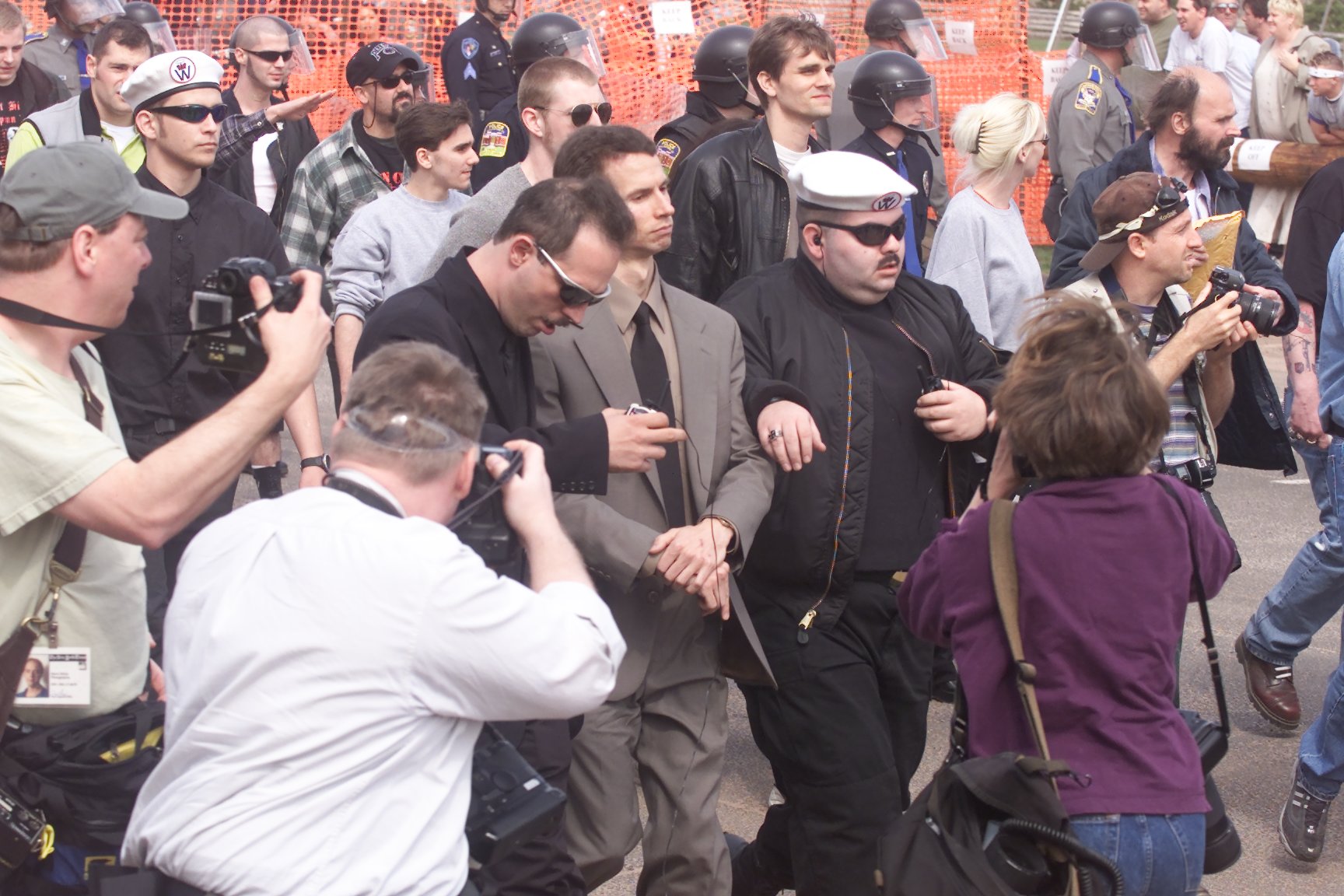
Matthew Hale, “Pontifex Maximus” of the World Church of the Creator is escorted by his followers to the Wallingford Public Library. March 2001. Photo courtesy of The Record Journal.
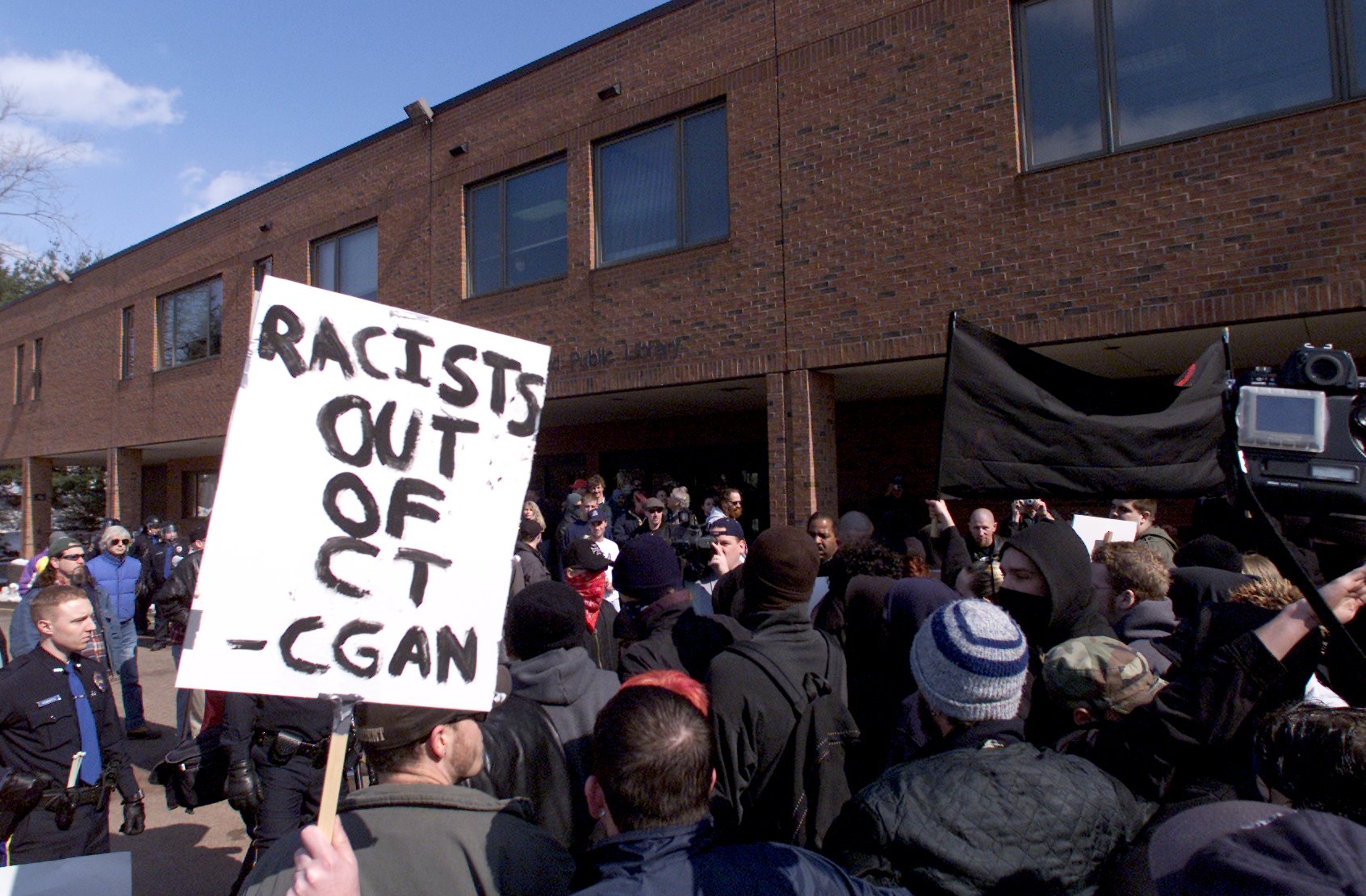
Peaceful protestors rallying against the World Church of the Creator. Wallingford Public Library. March 2001. Photo courtesy of The Record Journal.
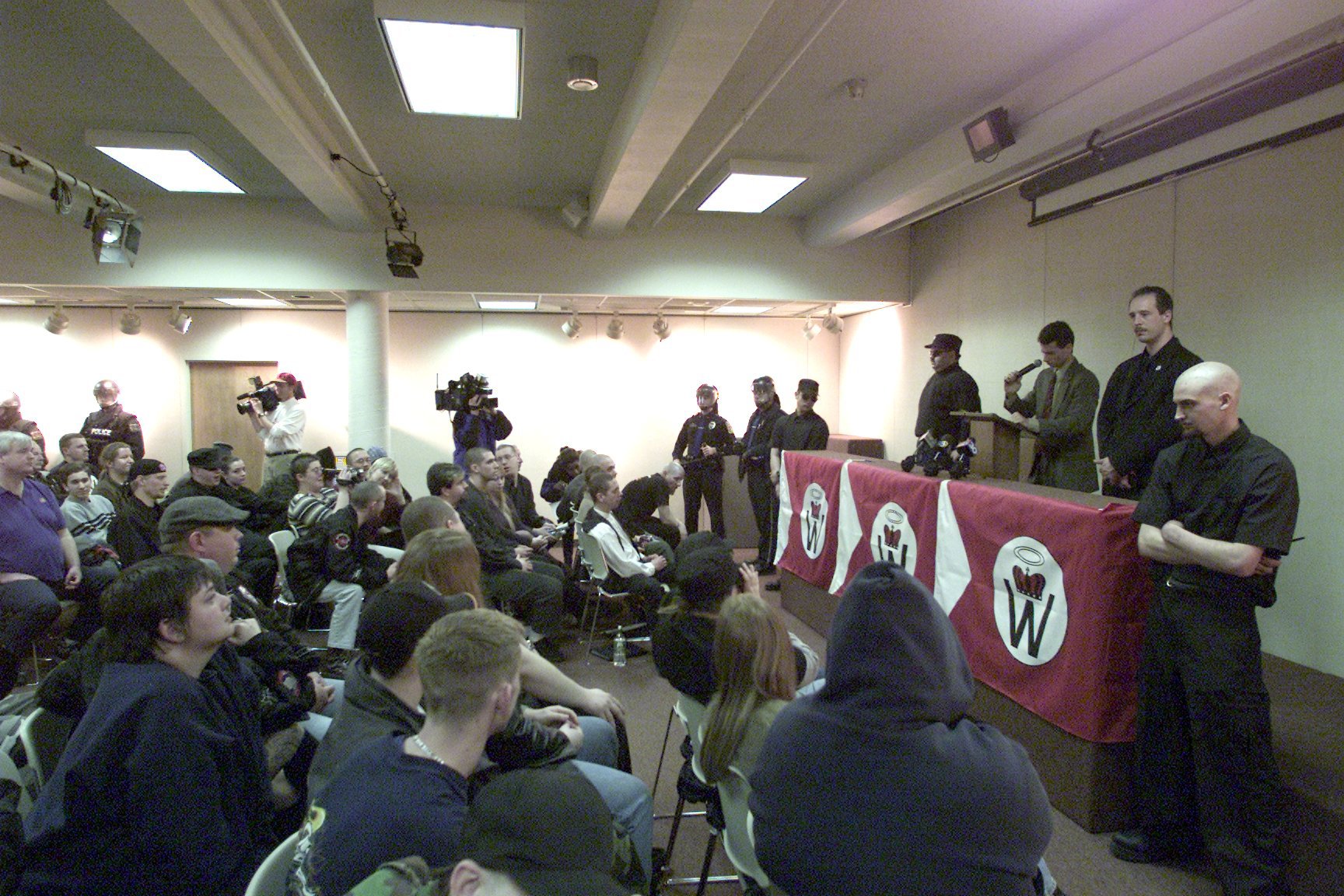
Attendees of Matthew Hale’s speech. Wallingford Public Library. March 2001. Photo courtesy of The Record Journal.
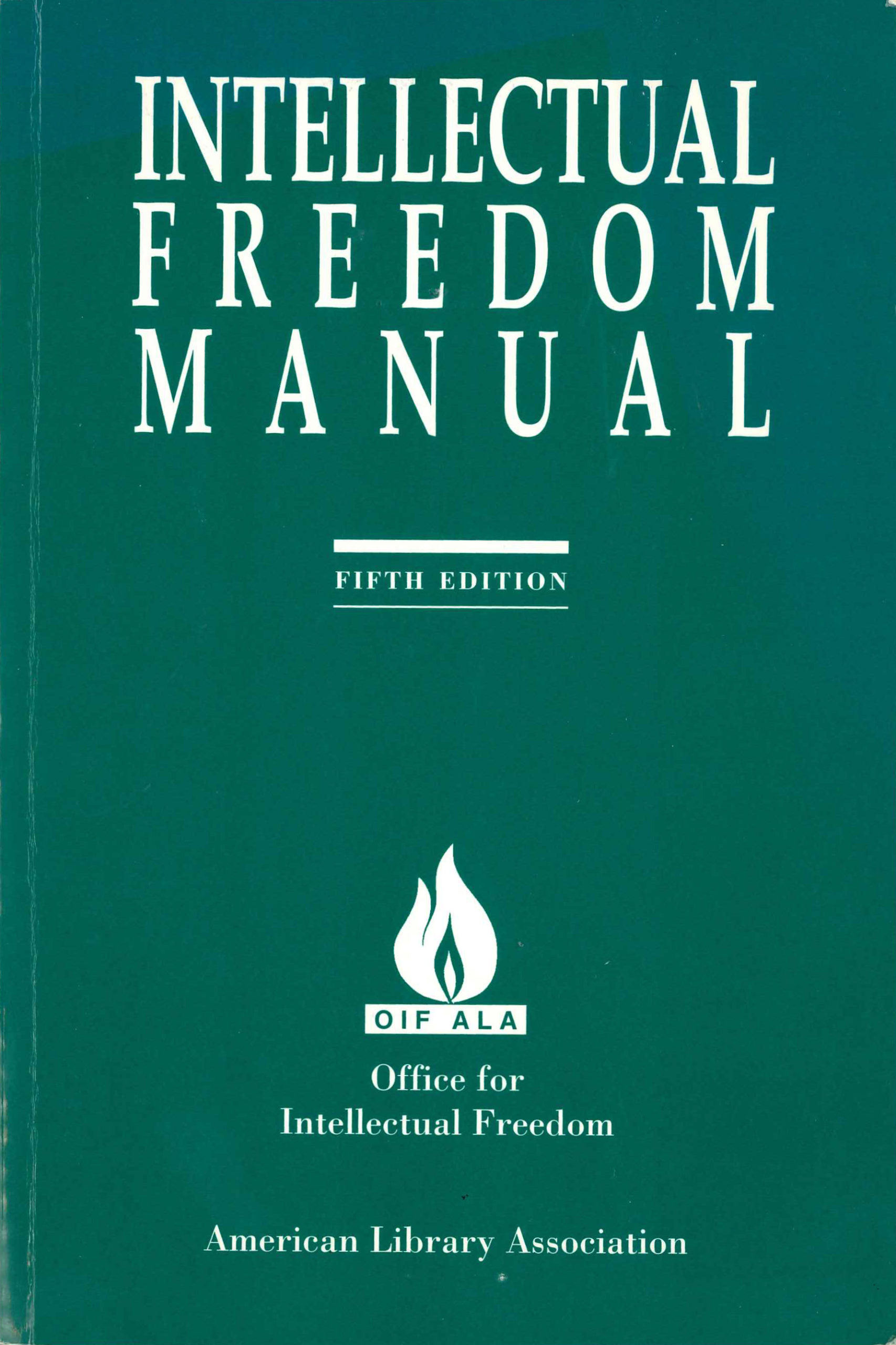
“Meeting Rooms: An Interpretation of the Library Bill of Rights.” Intellectual Freedom Manual: American Library Association, Fifth Edition, 100-101. Chicago and London: American Library Association, 1996.
Lynn, Fredricksen. “Racist group to meet in Wallingford.” New Haven Register. March 2, 2001.
Tommelleo, Donna. “Speech Sparks Fighting.” The Register Citizen. 11 March, 2001.
ADDITIONAL RESOURCES
Places to GO
Make an appointment to visit your own town/city hall or public library to discuss issues surrounding First Amendment rights and civic action with a town official or librarian.
Things To DO
Learn more about the Anti-Defamation League’s No Place for Hate® school initiative.
Websites to VISIT
Articles to READ
“Extremism in Connecticut: A State Study.” Anti-Defamation League. Gorowitz Institute: New York. 2001.
Barry, Jason J. “When white supremacy group prompted protests in Wallingford.” Record-Journal,
D’Arcy, Janice, Karen Guzman, and Michael Greenwood “Outside Pressure Builds on Wallingford Over MLK Day.” The Hartford Courant, April 26, 2000.
Dee, Jane E. “Race and Rage.” The Hartford Courant. March 11, 2001.


